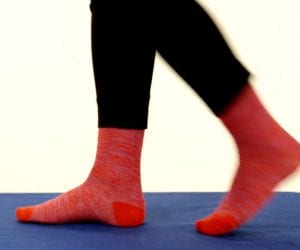Updated 2/8/2024
 This month, many elementary school classrooms celebrate the 100th day of school in creative ways. From 100-letter poems to first-graders dressing up like small, adorable centarians, recognizing this day is not only fun, but develops an important skill: conceptualizing large numbers.
This month, many elementary school classrooms celebrate the 100th day of school in creative ways. From 100-letter poems to first-graders dressing up like small, adorable centarians, recognizing this day is not only fun, but develops an important skill: conceptualizing large numbers.
We live in a world of over 8 billion people, which in students’ lifetimes is projected to be a world of 10 billion. Now more than ever, students’ ability to relate to global resource use depends on their capacity to understand what a million or a billion actually means. Population Education’s lesson, Millions and Billions, is a great way to get young learners thinking about the magnitude of big numbers, in the spirit of the 100th day.
Billion Dollar Riddle
The lesson starts by engaging students with a riddle:
“Your rich uncle has died and left you 1 billion dollars, but there’s a catch. In order to accept the money, you must count it for eight hours a day at the rate of one dollar per second. When you are finished counting the billion dollars is yours and only then may you begin to spend it.”
Students must decide whether or not they would accept this offer, defending their decision with mathematical evidence. While approaches vary, students use an understanding of long division, rates, and conversion between measurement units to determine that it would ultimately take over 95 years to count the money. At that point, it’s probably not worth it to accept the offer, because you may not even live that long (although some kids may make compelling arguments, citing increasing life expectancy). Students then calculate the same riddle but for 1 million dollars, and quickly see the difference.
Fun Word Problems for Millions and Billions
The lesson goes on to put millions and billions into context through everyday items or activities, using five different multi-step problems.

One problem asks students to determine where they would be if they travelled 1 million steps, and then 1 billion steps. It gets kids out of their seats and applying their knowledge in a hands-on way: measuring the length of a single step, making critical thinking decisions about what units they should use, and using a map to figure out where they would arrive.
Other questions include calculating the distance covered by 1 billion people holding hands and the height of 1 billion markers stacked end-to-end. There are no definitive answers (although student calculations can be checked for accuracy). The comparisons students make can easily be adjusted by the teacher—for a kid who loves giraffes, you can give them the height of the average giraffe (15-19 ft, by the way) and ask them to calculate how many giraffes it would take to equal a tower of 1 billion markers.
Worksheet on Millions vs. Billions
The provided worksheet includes built-in scaffolding, guiding students through the steps required to calculate the answer. However, many teachers find that presenting only the challenge, and letting students decide the process, builds critical thinking and encourages multiple approaches to finding a solution. The Millions and Billions lesson is differentiated, as the five challenges have varying levels of difficulty and each can be given with and without the scaffolding.
Here’s to a great 100th day of school—and to hoping summer break comes before the billionth day of school!




